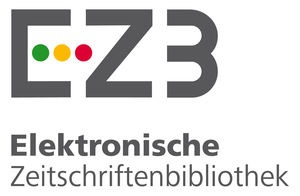Un estudio sobre el uso de CAS como caja negra para el aprendizaje de factorizaciones <br> A study on the use of CAS as a black box for the learning of factorization
DOI:
https://doi.org/10.23925/1983-3156.2017v19i2p387-407Palavras-chave:
álgebra, factorización, uso de CAS como caja negraResumo
Resumen
En este artículo se reporta una investigación en la cual se intenta averiguar si los estudiantes pueden adquirir habilidades necesarias para realizar factorizaciones algebraicas, utilizando software matemático. Para contestar la interrogante de la investigación, se aplicaron actividades a estudiantes de nivel secundaria y bachillerato, donde debían calcular factorizaciones algebraicas con ayuda del software GeoGebra, posteriormente se les pedía que buscaran patrones en los resultados que arrojaba el software para poder generar una factorización general. Después de analizar los resultados de la experimentación se encontró́ que los estudiantes son capaces de producir factorizaciones algebraicas generales, aunque presentan ciertas dificultades. Este trabajo cierra haciendo una discusión de las implicaciones que pueden tener los resultados encontrados.
Abstract
This paper describes a research study focused on finding out if mathematics students can acquire skills necessary to perform algebraic factorizations by using mathematical software. To answer the research question, a group of lower secondary school students and high school students were involved in mathematical activities where there should calculate algebraic factorizations using the software GeoGebra, then they were asked to look for patterns in the results generated by the software in order to produce a general factorization. After analyzing the results of the experimentation, it was found that students are able to produce general algebraic factorizations, but some of them have some difficulties in doing so. This work is closed by a discussion of the implications of the research results.
Referências
BUCHBERGER, B. Should students learn integration rules? SIGSAM Bulletin, v. 24, n. 1, p. 10-17, 1990.
CEDILLO, T.; KIERAN, C. Initiating students into algebra with symbol-manipulating calculators. In: FEY, J.T. (Ed.), Computer Algebra Systems in School Mathematics (pp. 219-240). Reston, VA: National Council of Teachers of Mathematics, 2003.
DOERR, H.M.; ZANGOR, R. Creating meaning for and with the graphing calculator. Educational Studies in Mathematics, v. 41, n. 2, p. 143-163, 2000.
DRIJVERS, P. White-box/black-box revisited. The International Derive Journal, v. 2, n. 1, p. 3-14, 1995.
HEID, M.K. Resequencing skills and concepts in applied calculus using the computer as a tool. Journal for Research in Mathematics Education, v. 19, n. 1, p. 3-25, 1988.
LAGRANGE, J.B. (1999). Complex calculators in the classroom: theoretical and practical reflections on teaching precalculus. International Journal of Computers for Mathematical Learning, v. 4, n. 1, p. 51-81, 1999.
LAGRANGE, J.B. Using symbolic calculators to study mathematics. In: GUIN, D.; RUTHVEN, K.; TROUCHE, L. (Eds.), The Didactical Challenge of Symbolic Calculators: Turning a Computational Device into a Mathematical Instrument (pp. 113-136). New York: Springer, 2005.
MOUNIER G.; ALDON G. A problem story: factorisations of xn-1. International DERIVE Journal, v. 3, n. 3, p. 51–61, 1996.
PANASUK, R.M.; BEYRANEVAND, M.L. Preferred representations of middle school algebra students when solving problems. The Mathematics Educator, v. 13, n. 1, p. 32-52, 2011.
PIMM, D. Symbols and Meanings in School Mathematics. London: Routledge, 1995.
WILLIAMS, J.; WAKE, G. Black boxes in workplace mathematics. Educational Studies in Mathematics, v. 64, n. 3, p. 317-343, 2007.
TROUCHE, L. ET AL. Expérimenter et prouver. Faire des Mathématiques au lycée avec des calculatrices symboliques. 38 variations sur un thème imposé. Montpellier: IREM, Université Montpellier II, 1998. Disponible en: <http://revue.sesamath.net/IMG/pdf/Experimenter_et_prouver.pdf>. Acceso en: 10 abr. 2017.
Downloads
Publicado
Como Citar
Edição
Seção
Licença
Autores que publicam nesta revista concordam com os seguintes termos:- Autores mantém os direitos autorais e concedem à revista o direito de primeira publicação, com o trabalho simultaneamente licenciado sob a Licença Creative Commons Attribution que permite o compartilhamento do trabalho com reconhecimento da autoria e publicação inicial nesta revista.
- Autores têm autorização para assumir contratos adicionais separadamente, para distribuição não-exclusiva da versão do trabalho publicada nesta revista (ex.: publicar em repositório institucional ou como capítulo de livro), com reconhecimento de autoria e publicação inicial nesta revista.
- Autores têm permissão e são estimulados a publicar e distribuir seu trabalho online (ex.: em repositórios institucionais ou na sua página pessoal) a qualquer ponto antes ou durante o processo editorial, já que isso pode gerar alterações produtivas, bem como aumentar o impacto e a citação do trabalho publicado (Veja O Efeito do Acesso Livre).













